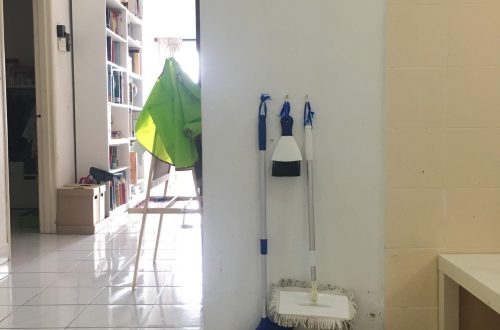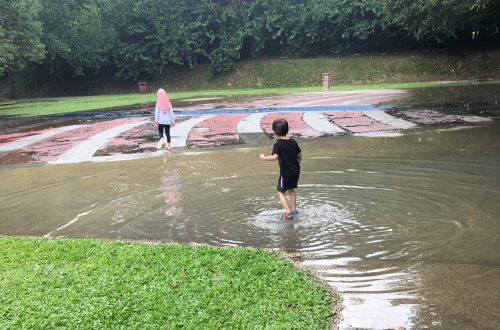Sharing
Sharing in Montessori Classroom
Masa minggu pertama playgroup, honestly I was so inexperience in handling situations, berebut aktiviti, bila sorang buat kerja sorang terus datang grab kerja yang sorang tu tengah buat etc. I also have to let parents know how sharing works in Montessori and how we don’t encourage children to give up what they’re doing to give in to others.
First, perlu faham ciri-ciri kanak-kanak 1st plane (0-6 tahun).
Pauline Meert for Trillium Montessori
The 0-6 plane is separated into two sections, the unconscious (0-3 years of age) and the conscious (3-6 years of age) stages. The unconscious stage is solely focused on the construction of self (learning who they are in relations to their environment). Children in this stage are not yet able to take into account another person’s actions/choices/desires. They are naturally very selfish but in the right way (in a matter of constructing themselves, unlike us adults who act selfishly out of self-interest).
Seterusnya faham tentang apa itu sharing? Yang kita buat selama ni tu sharing atau surrenderring? Biasa kalau anak main ada kanak-kanak lain datang nak, kita mesti akan cakap, “Kawan nak main bagilah kawan main. Good girl/boy shares.” Anak kita samada tak nak main, jadi violent (terus kita label tak good), atau anak kita menangis/merajuk. Mesti akan ada satu pihak yang tak puas hati.
Article ni terangkan dengan baik dua perkara ni, To share or not to Share?
Ringkasan dari artikel tersebut:
Kenapa ibu bapa nak anak-anak share?
- “They want their children to grow up to be socially-adept, happy adults able to have healthy relationships. The willingness to share is, in effect, treated as an important marker of other good social skills, skills such as being able to sustain friendships, being kind, considerate and respectful, and generally having benevolent, positive interactions with others.
- “It’s important to teach their children to be altruistic—i.e. to be mindful of others who may have greater needs than they do, and to choose to subordinate their own needs to those others.”
Tapi dengan praktis biasa kita buat, kedua-dua sebab di atas tu tercapaikah?
Maksud voluntary sharing:
“We take voluntary sharing to mean giving something one has to another person because one gains some benefit out of that immediate interaction (say, the ability to play with another child, rather than playing alone), or because one values the relationship with the other person (say, a friend or a spouse). Sharing, in that sense, is a trade of values, a win-win interaction: while the other person receives the physical good, the sharer receives an intangible benefit—a smile on the face of one’s spouse, a playmate to join in one’s games, the knowledge one has made friend’s day. “
Maksud surrender:
“In contrast, in surrendering under compulsion, one sacrifices a value, either under the threat of physical force, or under the pressure to conform to societal norms or moral expectations, without getting a commensurate value in return.”
Jadi,
“If we make him surrender his toy mid-play, we unintentionally send the message that his needs don’t matter; that his play is unimportant; that anybody can take his things at will, and that adults morally expect him to surrender his things to anyone who demands them. He may react by being angry, maybe even becoming physically aggressive—or alternatively by learning to just give up and passively retreat whenever conflict arises. (This passivity is often mis-identified as being a “good little boy” or “good little girl”, but in fact it represents an arresting development of the child’s self.)
The damage is not limited to the child whose toy is taken. The child taking the toy, if that behavior is endorsed, also learns unintended lessons: she learns that it is ok to take things from others against their will, without asking for permission. She learns that she just needs to claim “he isn’t sharing”, and like magic, an adult will take her side and give her whatever she wants. She certainly doesn’t learn to respect the rights and personal space of the other child, to empathize with his feelings, or to control her impulses to grab things!”
Jadi macamana sharing di pupuk dalam kelas Montessori?

From this article:
- Hanya ada satu sahaja setiap material/aktiviti
- Jika kanak-kanak sedang buat kera, kerja tu tak boleh diambil tanpa izin.
- Sharing hanya apabila kanak-kanak setuju ajak kawan bermain sama. Ianya tak dipaksa.
- Bila kerja siap dibuat dan dikembalikan semula ke shelf barulah boleh diambil.

“In Montessori, children learn to share through understanding that they must wait when something isn’t available. It’s a way of respecting others and, in turn, receiving respect from others.” The Little Gems Montessori
Artikel ni pula kongsikan cara untuk sharing ni dipupuk dirumah:
- Bila tetamu nak datang, bantu anak-anak simpan mainan yang dia paling suka yang dia tak nak share dengan orang lain untuk elakkan dari acara berebut.
- Bila anak merengek “Nak gunaaa.. nak guna… lamanya dia mainnnn.” Cuba explain mainan tu hanya available bila kawan dah habis main, bila tiba turn, anak kita boleh main selama mana dia nak, pastu ajak dia cari mainan lain.
- Untuk anak tahu yang kita faham seksanya menunggu tu kita boleh bagi contoh, “Ya, mama tahu susah nak tunggu. Pagi tadi masa mama nak guna toilet, mama kena tunggu papa siap mandi.” Bagi mereka faham menunggu tu adalah skill yang diperlukan dalam hidup.


